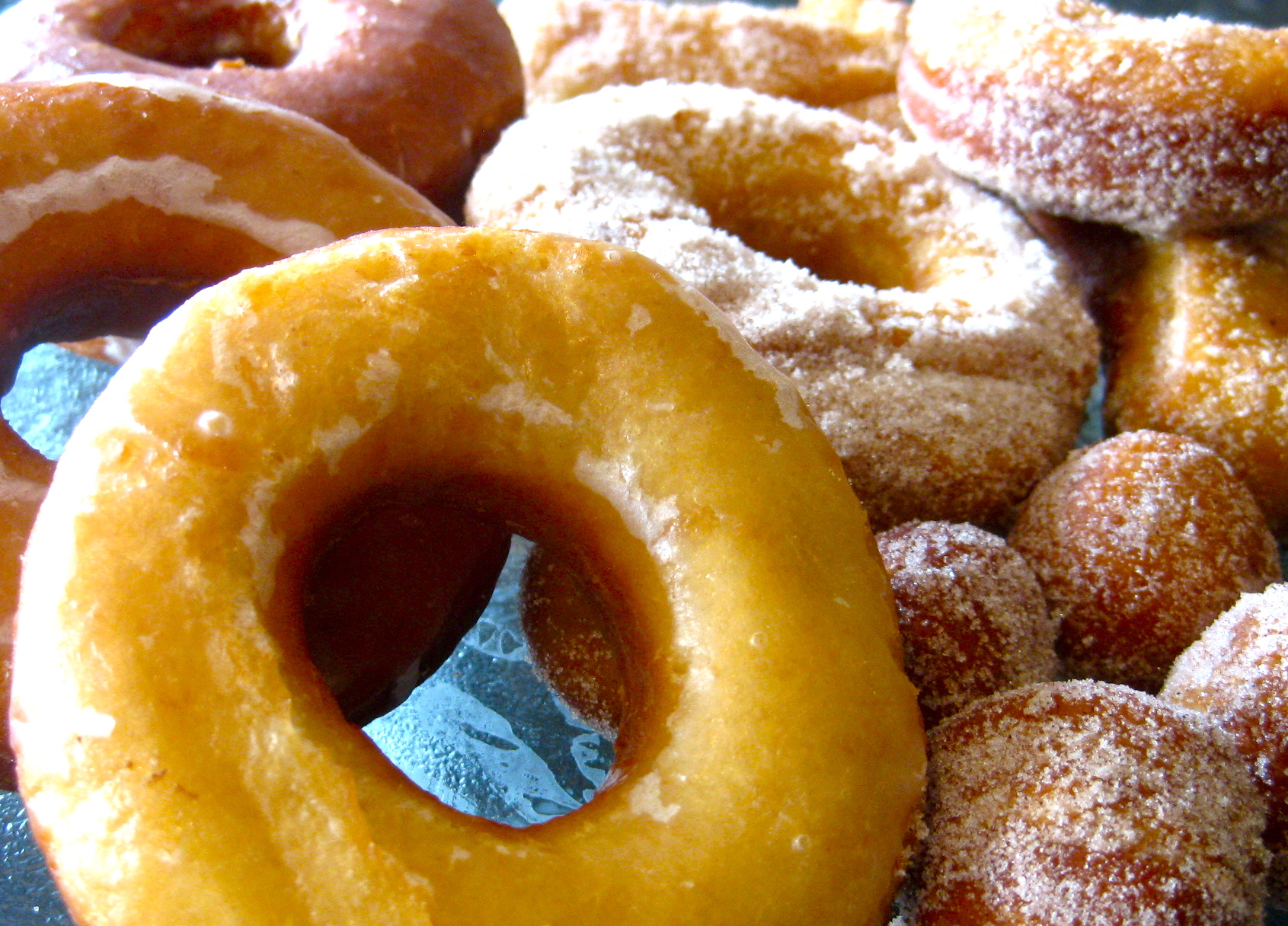Can you imagine how Stephen Hawking must have felt when the concept for the expanding universe dawned on him? Or how Tesla might have felt when he first realised the potential of wireless technology? That’s kind of how it was for me when I bit into some donuts that I made last week. It was like time and space was bending, the ether opened up and whispered to me the secrets of the universe and the cosmic recipe for the best donuts ever made. You might think I’m exaggerating, but perhaps you’ve never tried to make donuts at home, or experienced the acute disappointment of biting into that disc of fried dough that you’ve lovingly crafted, only to realise that you’ll never put Krispy Kreme out of business. I’ve made donuts and fritters of all kinds in the past, and never once have I reached the level of lightness and texture that I achieved with this recipe. It took some tweaking and research. Risks were taken.
Don’t attempt this recipe if you don’t have a stand mixer because the dough is too wet too handle without automated assistance, and furthermore, you need the luxury to be able to make mistakes. When you’ve hand-kneaded dough, chances are you won’t take failure as lightly as if you’ve pressed a button and watched the machine make a few rotations. The key to this sort of baking is to go with your instinct. Know your dough; when it’s not wet enough or too wet, when it’s ready to be proved. Know when to add a little more flour or water to get the mix right. Knowing these things will help your chances of success in this chaotic world of home-made donuts.
Once you’ve mastered this recipe – you’ll realise that these donuts are not at all difficult to make. The dough is a pleasure to handle, cutting the shapes is easy and the frying is not fiddly or messy and the results, well, they speak for themselves.
Donut Recipe
Ingredients:
1/3 cup sour cream
1/3 cup water (warm)
85g softened butter
1/4 sugar
1 egg
3 cups plain flour
1 pkt fast-action yeast (I prefer the Hovis brand over generic brands)
1 tsp salt
Method:
Put the butter, egg, salt and sugar into your mixing bowl and mix to combine, using the paddle.
Swap to the dough hook, and then add flour, yeast and warm water.
Work the mixture until it forms a wet, sticky dough. It’s ok to add more flour or water if you think it needs it.
It takes about 5 minutes until the dough starts to finally pull away from the edges of the bowl. That’s how you know it’s ready to go. I don’t know the ramifications of over-kneading, but I’m sure it won’t be too detrimental. It’s my experience that the strengthening proteins (the way the dough will spring back and hold together) is the pathway to lighter dough.
Let the dough prove for 2 hrs. It should double in size.
Roll the dough out on to a floured surface to about half an inch thick. Use cookie cutters to cut larger circles and then a small one to punch out the hole.
Place the rings and holes on tray lined with baking paper and leave to prove for another hour.
Heat oil to 180C and fry the donuts, about 3 at a time is fine.
For sugared donuts, roll them while they’re still hot in the sugar and cinnamon mix. For the glazed, let them cool to room temp.
Make the glaze with icing sugar, warmed milk and vanilla, mixed to a thin consistency. You’ll need a few coats.

